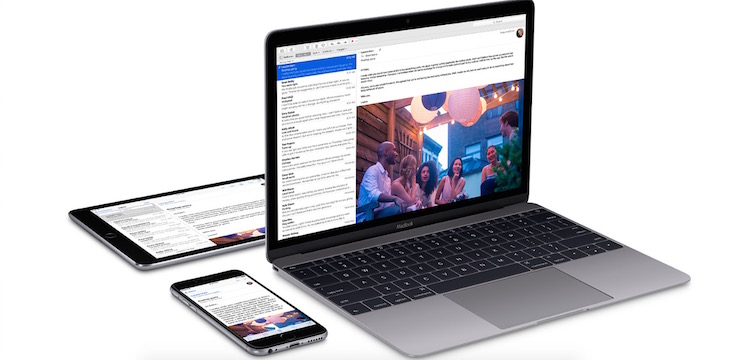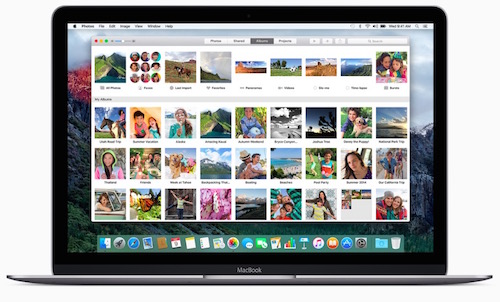Here’s Why You Should (or Should Not) Upgrade to OS X 10.11 El Capitan

Toggle Dark Mode
Apple has released its latest and greatest computer operating system, OS X 10.11, dubbed ‘El Capitan’.
Some Mac users really liked Yosemite and might not want to upgrade to the latest operating system for fear of the operating system they loved before could be changed negatively.
Here’s why you should upgrade your operating system to OS X 10.11 El Capitan.
The first thing to note is that unless you have any real reason to not update your operating system, you should update it. Security fixes are usually included in OS updates, ultimately making the new OS worth a download no matter what.
On the surface, not that much has really been changed in El Capitan. The operating system retains the look of OS X 10.10 Yosemite, but adds a few new features such as better multi-tasking abilities and the ability to find your cursor more easily. Clearly, Apple is pretty happy with how OS X looks and feels, and isn’t going to dramatically change that anytime soon.
It’s not on the surface that the El Capitan shines, however. It’s under the hood. El Capitan offers a performance boost in almost every way. When I updated from Yosemite to El Capitan I was pleasantly surprised to find that the boot up time of my computer was severely reduced. It almost felt new again.
Apps themselves seem to have sped up, and will take quite a bit less time to open for the most part. This is certainly true of Apple’s own apps, but users will also notice a bump in speed when it comes to third-party apps.
On the surface
Now it’s time to go back to what El Capitan looks like on the surface. While things haven’t changed dramatically, there are a few key changes to how users interact with the new operating system
Most people will probably know the feeling of losing the cursor on the display. Once you can’t find it, you jiggle the mouse a little and look for movement on the screen. This often helps you find the cursor, but not always. Apple has added a small but helpful feature to remedy this. If a user has lost the cursor, they can jiggle the mouse and the cursor will grow, making it far easier to find. Once the user stops moving it around, they the cursor will shrink back to its normal size, and the user can resume working.
Perhaps more importantly than being able to find the cursor is that Apple has finally allowed users to be able to use two apps in split screen mode. Users simply need to hold down on the green “full-screen” button and they will be given the option of putting the app on a new desktop, taking half of the screen. Using mission control, the user can then select another app to put on the screen, taking up the other half. The user can then change how much screen-space each app takes up. This saves a lot of time for those who using two apps in one screen often.
Finally, and perhaps the most under-rated feature in the new operating system, is the ability to minimize emails in full-screen mode. This is a bigger deal than it might sound. Previously users had to frustratingly close out of emails in full screen mode to be able to go back to other emails in order to copy information, find an attachment, and so on. Now, users can minimize new emails, which have their own window, even in full screen mode, meaning the user doesn’t have to do things like save emails as drafts.
Why you might not want to upgrade
Of course, there are always reasons not to upgrade to a new operating system. When upgrading, users should always create a backup of their data. This is easy with Time Machine, but if you’ve never used Time Machine before, this can take a while and will take up a lot of space.
Not only that, but there are plenty of third-party applications that do not yet support El Capitan, especially in professional settings. Pro Tools, which I and many professional audio engineers around the world use, does not yet support El Capitan, at least officially. While some apps will probably work anyway, if your job or your passions require the use of a particular app, then you should probably hold off until you know that it’s supported. In my case, I did not follow my own advice, and went ahead and upgraded despite knowing Pro Tools did not support El Capitan. What I did do, however, was create a Time Machine backup so that if it didn’t work at all, I could go back to using Yosemite.
A good example of this is the new version of Microsoft Office, which has been experiencing several issues in El Capitan. Those that already use Microsoft Office 2016 might want to hold off on updating until Microsoft sorts this issue out.
Conclusions
El Capitan is a great operating system, and offers a number of very helpful new features, apart from the surface features that improve multi-tasking. If you don’t have any real reason not to upgrade, go for it. Nothing has drastically changed from Yosemite in terms of features, and El Capitan simply offers a few new features that enhance productivity rather than completey replacing how you might have previously worked.









